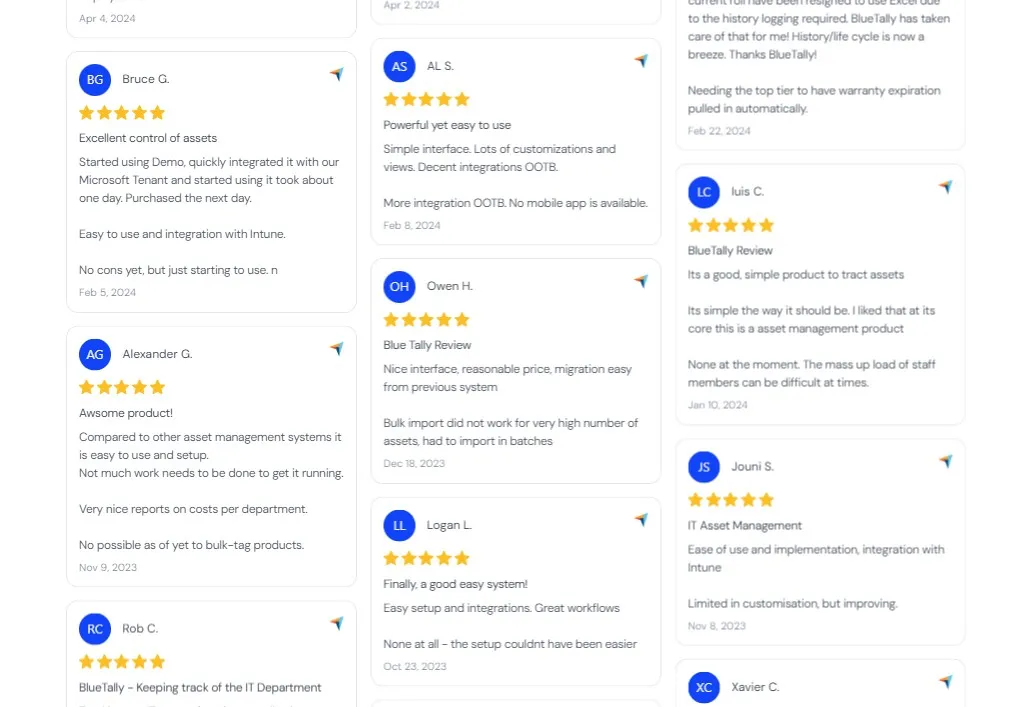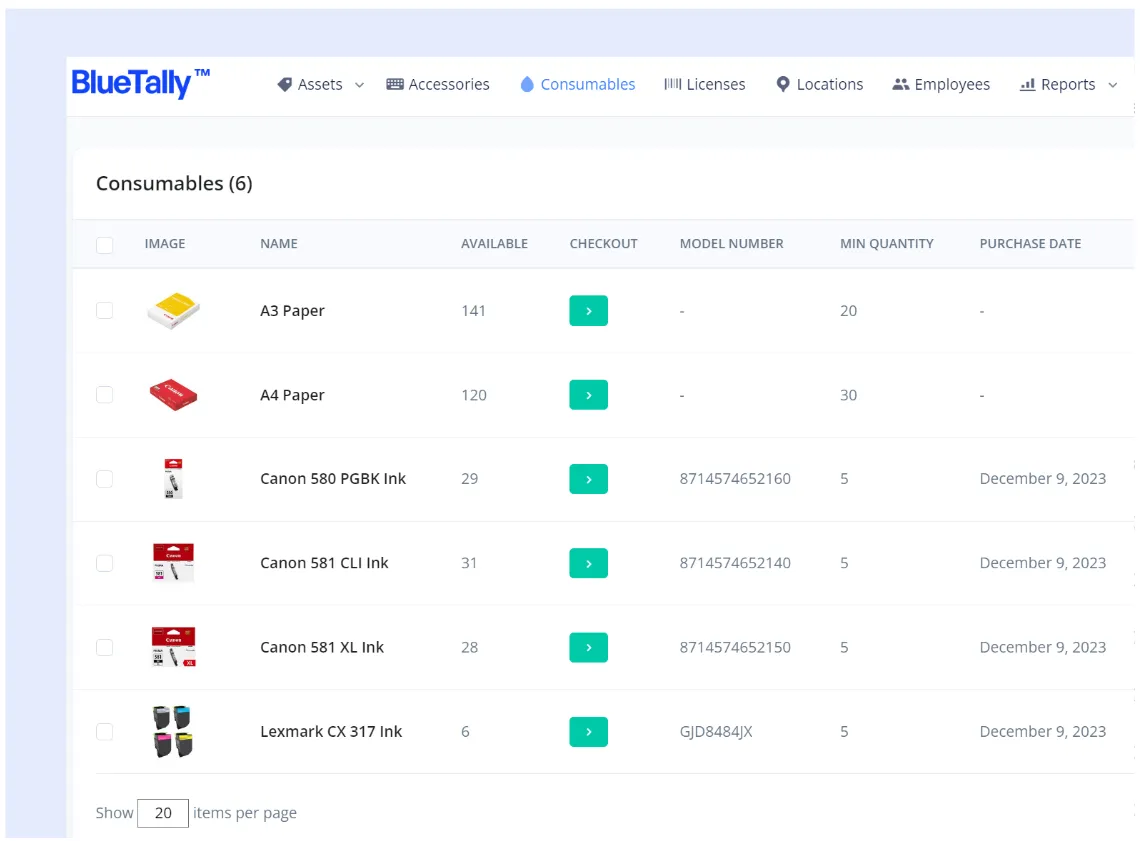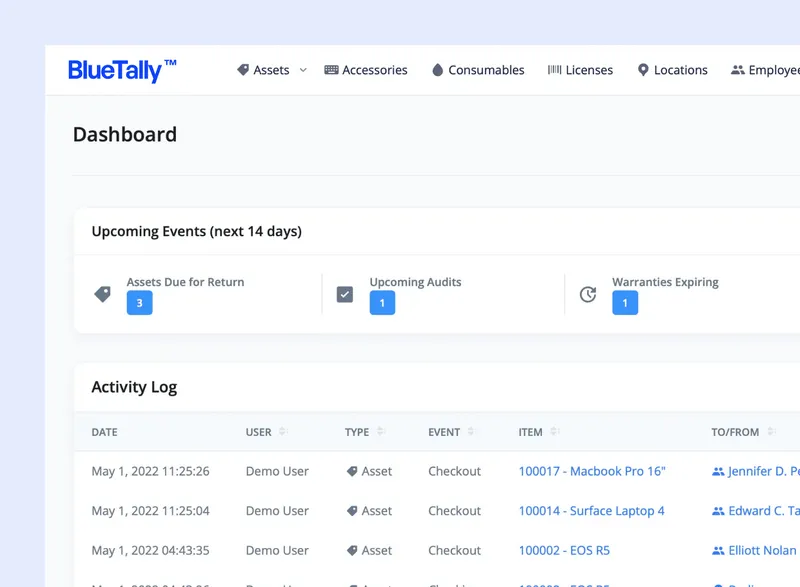Here’s How to Develop the Best IT Asset Management Strategy

Helpful Summary
- Overview: In this guide, we outline the essential steps to building a robust IT asset management strategy. These steps emphasize goal-setting, inventory organization, policy creation, performance evaluation, team training, and continuous improvement.
- Why You Can Trust Us: At BlueTally, we have extensive experience in various sectors, helping businesses streamline IT asset management, reduce errors, save time, and improve security.
- Why It Matters: Effective IT asset management saves costs, promotes accountability, boosts security, enhances decision-making, ensures compliance, prevents downtime, and increases agility.
- Action Points: Start by setting clear goals, organize assets into an inventory, create policies, evaluate performance, train your team, and continuously update your strategy.
- Further Research: Explore other comprehensive guides on our blog to discover additional tools and insights for better asset management in your organization.
It's super beneficial for your business to nail IT asset management. Keep your assets in check and your team on track. The real goal here? To expertly manage, control, and safeguard your IT assets from start to finish.
But, for this to be successful, you need to build a strong IT asset management strategy. After all, this will be the blueprint to help you attain your goals and get the most out of the process.
Developing an effective strategy for this is easier said than done. So, in this BlueTally guide, we’ll outline the necessary steps you will take toward creating and launching these strategies.
Let’s dive right in.
Why Listen to Us?
Creating an effective IT asset management strategy can be challenging, but we've supported several businesses through this process successfully. Our tool simplifies IT asset management by providing a centralized platform to track and manage assets, from acquisition to disposal.
Our clients have seen significant improvements in asset tracking, reduced downtime, and better compliance with industry standards. Our integrations with systems like Intune and Azure AD ensure seamless operations, making IT asset management efficient and accurate, which leads to creating a strategy that helps you reach your project’s goals.

What is IT Asset Management?
Basically, this refers to the process of managing assets through their lifecycle. With IT asset management, you’re working with your technology assets.
The process involves ensuring that your business’ IT assets are all accounted for, deployed, upgraded, maintained, and disposed of when needed.
Why do You Need an IT Asset Management Strategy?
For an effective IT asset management system, it's crucial to have a comprehensive view of your IT assets – whether software, hardware, or network equipment – and understand their impact on your business success.
This is important for your organization primarily because of its benefits, which include:
- Saving on your business’ expenses:By gaining a clear grasp of your active IT assets - how they're used, licensed (especially software), and when replacements are due - you not only cut costs by steering clear of needless purchases and duplicates, but also mitigate risks of fines and rushed emergency licenses in software audits.
- Promoting accountability and transparency: With a solid strategy in place, your organization can monitor which IT assets are actually being used by team members, enhancing accountability and mitigating the risk of loss, misplacement, or theft. By fostering transparency around your IT equipment, you can assess their value and determine cost-saving measures to implement.
- Boosting security: Following a strategy will also help you immediately determine security risks and vulnerabilities in your IT infrastructure. This way, you can take the appropriate action to mitigate the risks and protect sensitive data.
- Allowing your team to make better decisions: With the right IT asset management strategy, you have a good perspective about which assets need upgrading or replacement, as well as how to allocate resources, allowing your team to make more informed decisions.
- Ensuring you are complying with industry standards: These strategies will also help your business stay compliant with industry regulations and internal policies, protecting you from paying hefty fines and penalties come audit time.
- Preventing downtime: Downtimes take their toll on the productivity and results of your business. With a strategy for IT asset management, you can identify problems with your IT assets and address them before they even cause downtime or disruptions.
- Allowing your business to be more agile: With a strategy, you have a better understanding of your IT assets. With better understanding, you can embrace changes and seize opportunities that show up.
Steps To Building an Effective IT Asset Management Strategy
1. Undergo Into Goal-Setting
As with creating other types of strategy, the first step here is goal-setting. Ask yourself the following questions:
- What do you want to achieve from your strategy?
- What’s the mission? (To have a license? To improve how you handle costs? To respond to audits more effectively? To prevent losses?)
Specify, specify, specify. Many IT asset management strategies fail because they’re anchored on goals whose scope is too hazy. Set a meeting with your executives to discuss these goals.
David Rodriguez, a former Global Chief Human Resources Officer at Marriott International, highlighted the importance of setting goals and objectives, pointing out that these should not just be a “final destination,” but a “starting point.”
2. Organize Your IT Assets Into an Inventory
One great way to avoid finding your IT assets scattered is to organize them into an inventory. This will help you better understand what you have on hand, their locations, and who are responsible for them.
Some of the things to include in your inventory are:
- Unique identifiers
- Asset type
- Version number
- Support details
- Vendor information
- Owner
- Relationship to other assets
Our tool, BlueTally, takes away the need for complicated spreadsheets and clunky systems. It consolidates asset history, warranty info, maintenance records, and audits into one convenient, centralized platform.
With regard to unique identifiers, each of your assets gets a unique QR code you can print right through BlueTally with the unique Asset ID, making it easier for you to identify the assets.

BlueTally also makes managing your inventory less of a hassle. You can track your consumables and get notified when they run out and it’s time for you to reorder.

3. Set a Clear Policy
Without a policy for your IT asset management strategy, it will be an anarchy. With a policy, there’s no room for confusion. Some of the things that should be in your policy include:
- Purpose of your strategy
- Its scope
- Legal requirements
- Steps to request the assets
- Installation guidelines for support teams (usually applies to software assets)
- Maintenance
- What to do with hardware or software no longer in use
- Relationships with other processes
- Where to go and who to talk to for help
Starbucks is one of the companies that create strong policies to make sure its IT asset management strategies are better realized. These policies include a comprehensive asset lifecycle management and integrations with cybersecurity.
4. Create an SOP for Evaluating IT Asset Performance and Use
Aside from a policy for your IT asset management strategy, you must also create a process for evaluating how your IT assets are performing and used. Here, it’s crucial to define metrics for tracking your assets from the very beginning and build dashboards to always have updated visibility.
Speaking of dashboards for IT asset management, our tool can help. Everything is in a centralized dashboard. Get a high-level overview of all your asset activities, upcoming events, expiring warranties, and even asset value and depreciation.

5. Train Your Team
You can’t expect your team to know the ins and outs of building an IT asset management strategy from square one. So, it’s important that you train them.
Ensure your team members understand the basics and importance of IT asset management and its roles and benefits. To achieve this, you can:
- Conduct regular training sessions
- Develop clear documentation
- Leverage interactive tools
- Foster open communication
6. Keep Improving
Building your IT asset management strategy does not end when you’ve written the very last word of it. Keep updating this strategy. This way, it remains effective, in accordance with your goals, and progressing toward them.
For example, Sainsbury's, a major United Kingdom-based supermarket chain, implemented an Asset Performance Management (APM) system to continuously improve their IT asset management strategy. The company enforced a state-of-the-art solution that integrated sensors and monitoring devices into their refrigeration units, some of the assets they are managing.
This helped them enhance their IT asset management, thus lessening energy expenditures, avoiding failures, and guaranteeing food safety.
Best Practices for Developing Your IT Asset Management Strategy
When developing an IT asset management strategy that works, consider the following best practices:
- Comprehensive Inventory Management: Keeping an accurate, up-to-date inventory of all your IT assets is fundamental. The inventory should cover hardware, software, and licenses. Aside from using tracking tools, regular audits should be conducted to verify the accuracy of the inventory.
- Lifecycle Management: Managing the entire lifecycle of your IT assets from procurement to disposal is also essential. This involves planning for asset acquisition, deployment, maintenance, upgrades, and decommissioning. Proper lifecycle management helps in maximizing asset utilization, reducing downtime, and planning for replacements proactively.
- Compliance and Risk Management: Ensuring your IT assets are always in compliance with software licenses, regulatory requirements, and internal policies is likewise crucial to avoid legal and financial penalties. Carrying out compliance checks and using monitoring tools can help identify and rectify non-compliance issues. Additionally, you must also comprehend and mitigate risks associated with IT asset management, such as data breaches or hardware failures. This is vital for maintaining security and continuity.
- Employee Training and Awareness: Educating employees on your IT asset management policies, procedures, and strategies creates a culture of responsibility and accountability. The training should cover proper use of the assets, security SOPs, and how to report. This ensures that all team members understand their roles in maintaining the integrity of every asset integrity and supporting the organization's IT asset management strategy.
Conclusion
To steer your IT asset management in the right direction and toward its goals, don't overlook the power of crafting a strategy. While your management practice plays a crucial role, it's the strategy that truly brings everything together. Having a solid strategy in place is key to ensuring your practice harmonizes seamlessly with your organization's overarching objectives.
Our platform, BlueTally, empowers you to fortify your strategies. With this tool, you can streamline your IT asset management by utilizing our centralized platform to track hardware, software, and licenses. Benefit from automated inventory updates, lifecycle management, compliance monitoring, and comprehensive reporting. Our user-friendly interface, packed with robust features, allows you to uphold precise records, enhance asset utilization, and guarantee compliance, thus bolstering an efficient IT asset management approach.






